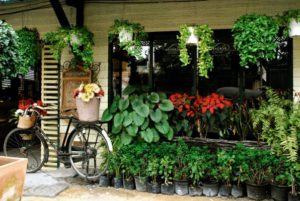According to a 2015 study conducted by the National Drought Resilience Partnership (NDRP), the drought across the Western United States and parts of the Midwest region was predicted to intensify. With so much sun and little rain, homeowners would need to prepare their landscapes accordingly. If you live in one of these drought-ridden areas, an easy solution for an efficient and attractive yard is a natural landscape.
Natural landscapes are gaining popularity for good reason. Plants native to a particular region have adapted to the surrounding environment, whether it features harsh winters, flooding or droughts. Native plants tend to flourish in local soils, and the Environmental Protection Agency (EPA) says these landscapes are good for the environment.
Aside from occasional pruning and weeding, maintenance on natural landscaping is minimal. Once implemented, native landscapes do not need fertilizers, herbicides or pesticides. Natural landscapes usually require less water and minimal maintenance, which make them ideal for busy homeowners.
Another growing trend in drought-ridden areas such as California is “xeriscaping.” Plants required for this type of landscaping vary by region, but they are commonly waste-efficient and require extremely low amounts of water — if any at all, the EPA says. Maintenance-free “hard elements” in a yard can include rocks, fences, walking paths or lawn ornaments. These features help fill your landscape and require zero maintenance.
Whatever choice homeowners consider when deciding how to create a beautiful outdoor landscape, NAR recommends keeping costs below 5 to 10 percent of the home’s value, so that you don’t over-improve.
Photo courtesy of Dillon Scheps






